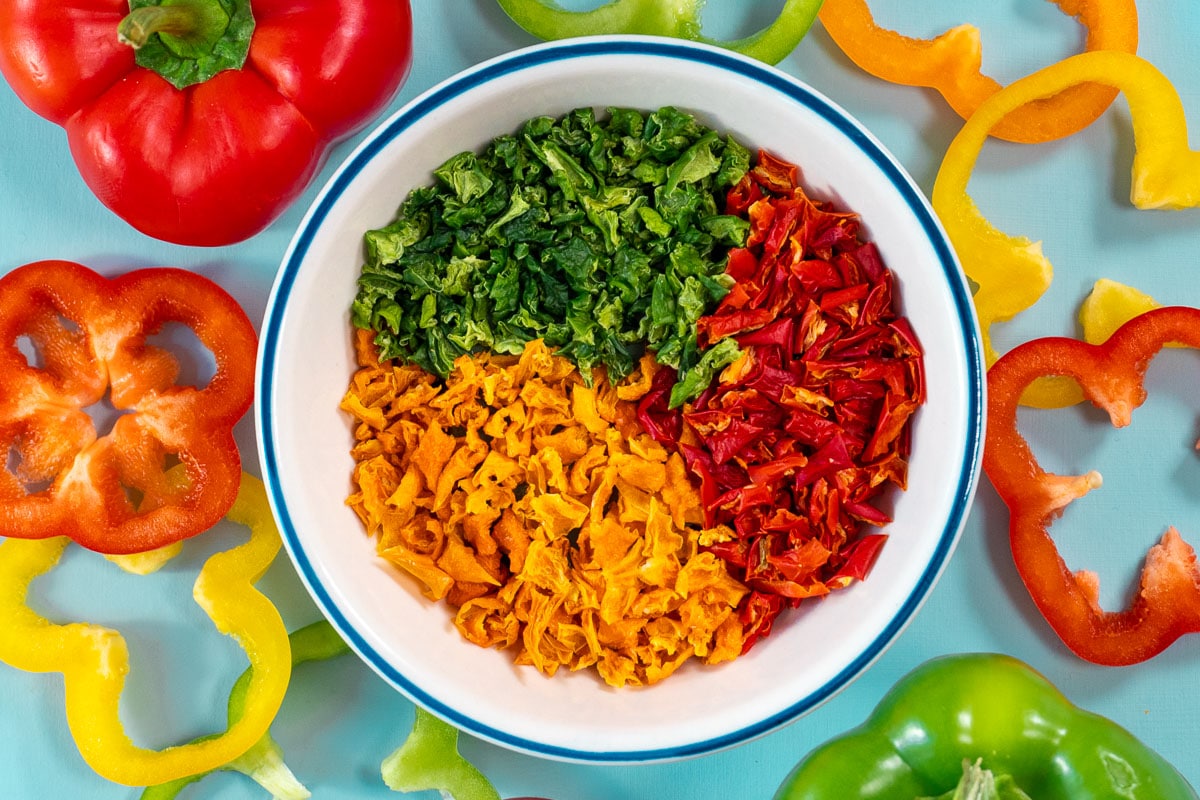Dehydrated Bell Peppers
5.0
(1)
Your folders
Your folders
Prep Time: 10 minutes
Total: 490 minutes
Servings: 1
Author : Fresh Off The Grid

Ingredients
Export 1 ingredients for grocery delivery
Instructions
Step 1
Start with clean hands, equipment, and countertops.
Step 2
Prep the bell peppers—remove and discard the top, white ribs, and seeds. Cut into ¼” to ½” squares, or into thin strips.
Step 3
Optional: Blanch if desired. Bring a pot of water to a boil and add the sliced or chopped bell peppers. Blanch for four minutes before straining out the peppers and placing them in an ice bath or running under very cold water to stop the cooking process. Drain and dry.
Step 4
Arrange the bell peppers on dehydrator trays, utilizing a mesh liner to prevent the peppers from falling through the holes as it shrinks.
Step 5
Dehydrate at 125ºF (52ºC) for 6-12 hours until the bell peppers are is dry and hard—they should not bend (see note 2).
Step 6
Let the dried bell peppers cool completely before storing.
Step 7
Short term storage: If bell peppers will be consumed within a few weeks, store in a ziptop bag or sealed container on the counter or in a pantry.
Step 8
Long-term storage: Condition by loosely packing the dried bell peppers in a transparent, airtight container. Leave it on the counter for a week and check it daily for signs of moisture. If condensation appears, return the bell pepper to the dehydrator (unless there are signs of mold—then, throw out the whole batch). Shake occasionally to keep the pieces from sticking together.
Step 9
After conditioning, store in an airtight container in a cool, dark place for up to a year. Vacuum sealing will help extend the shelf life and quality of the bell pepper.